Count Dracula Best Tour
Welcome to a great travel adventure that will take you to Eastern Europe's most infamous land of the unholy Transylvania! During six "scary and spooky" days, you will experience the perfect mix between history - involving Vlad Tepes, and mystery - surrounding the undead blood sucker, Dracula.
Highlights:
- The Princely Court - Dracula's Palace in Bucharest
- Snagov Monastery, the place where Vlad was buried after his assassination
- Brasov, one of the most beautiful cities in Romania
- Bran Castle, well known as Dracula's Castle.
- Sighisoara citadel - Europe's best preserved medieval town!
- Vlad the Impaler (Dracula)'s House
- Borgo Pass in the Carpathian Mountains.
Departures: all year
Duration: 6 days/ 5 nights
PRIVATE TOUR: private tour
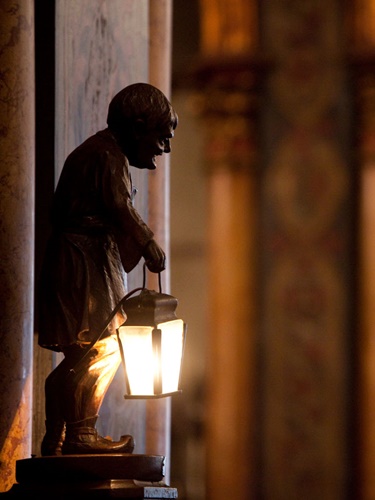
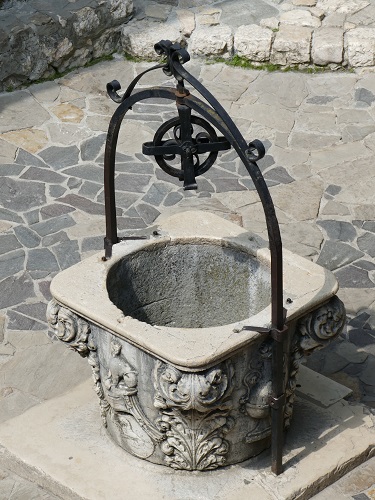
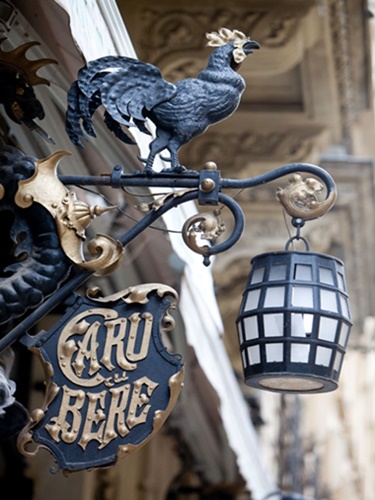
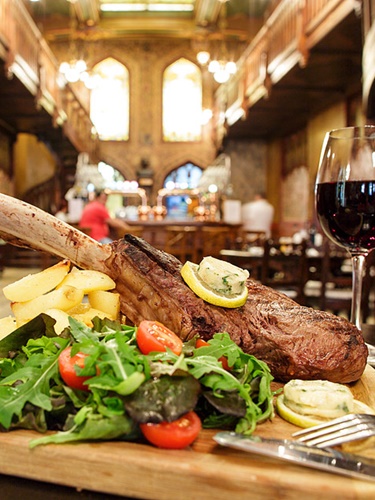
We will start to discover Count Dracula's traces at the Princely Court - Dracula's Palace in Bucharest, built in the second half of the XIVth century.
The guide will pick-you up from your hotel/airport and you will start to discover the city. The city tour includes all the important places and architectural buildings: Parliament Palace, Arch of Triumph, the former Royal Palace (nowadays the Art Museum), the Athenaeum (Romania’s most famous concert hall), the Revolution Square (where the 1989 anti - Communist revolt went nationwide), ride along Victoria Avenue, the University, the National Theatre, the Opera House, Manuc’s Inn, the medieval core of the town, the Patriarchy.
In the heart oh Bucharest, often overlooked by tourists exploring all the wonders of Old Town, is all that remains of Curtea Veche, the Old Princely Court. Almost 500 years before Irish novelist Bram Stoker immortalized his name, Vlad III Dracula ruled Wallachia, a province of now modern-day Romania.
A bulwark against Ottoman Turkish aggression, Vlad, like his father and namesake, was sworn into the Order of the Dragon, an alliance of Christian rulers who fought against the Ottoman invaders. Known for his brutality on and off the battlefield, Vlad earned the name Tepes or “The Impaler” from the Turks for his preferred method of executing his enemies.
Recognizing the city’s strategic location along the Dambovita River near Wallachia’s southern border, Vlad III Dracula set up his summer residence in what was then known as “the Citadel of Bucharest,” and the city soon became the economic nucleus of Wallachia. Bucharest became the preferred residence of subsequent rulers and eventually the capital of Romania. The princely palace and court, too, gained prominence as the commercial and religious hub of the city.
Overnight in Bucharest.
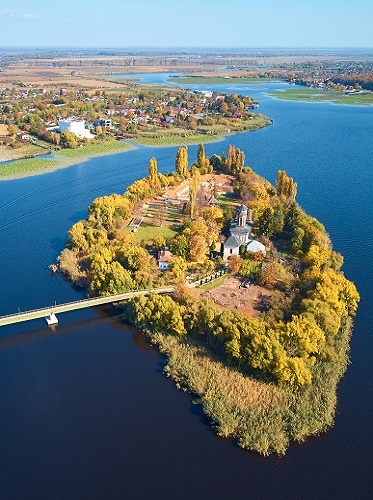
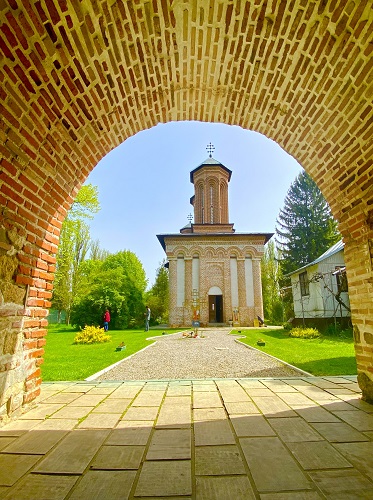
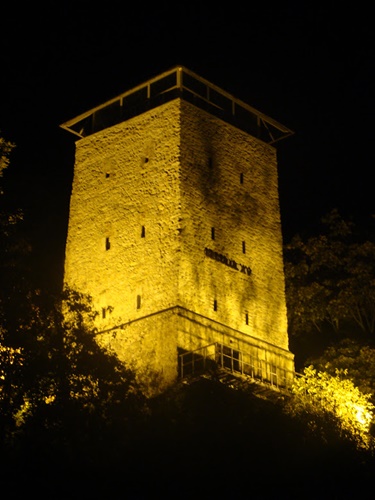
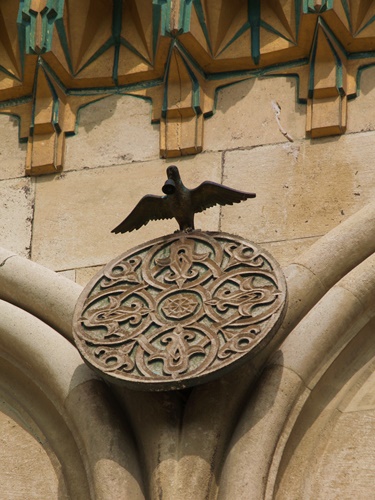
The guide will pick you up from the hotel and we will head to Snagov, where we will visit Snagov Monastery, the place where Vlad was buried after his assassination. The monastic establishment is located on a small island of Snagov Lake so you’ll also enjoy a boat trip across the lake.
The architectural style of the monastery follows the architectural pattern that is characteristic to the monasteries on the Holy Mount Athos in Greece.
As with many aspects of the ‘Dracula’ story, there is much debate as to whether the body buried here actually belongs to Ţepeş. The bloodthirsty prince died in 1476 battling the Turks near Bucharest. His head was famously lopped off and carried back to Istanbul, where it was paraded on a stick. What happened to the rest of the body was never made clear. Whether or not he’s actually buried here, Vlad Ţepeş apparently had strong connections to Snagov. In 1456 he built fortifications around the monastery. He also built a bridge from the lake to the mainland, a bell tower, a new church, an escape tunnel and a prison and torture chamber. The remains of the prison (behind the present-day church) can still be seen.
After that, we will continue our way to Brasov, one of the most beautiful cities in Romania. The main attraction is the medieval part of the city with the Black Church, that houses a priceless collection of Oriental rugs as well as a 4000-pipe organ. The Town Hall Square, the Franciscan Monastery, the Central Park, the Black Tower, the White Tower, Ecaterina's Gate, Schei Gate and the Rope Street - the narrowest street in Europe.
Overnight right in the historical center of Brasov.
.jpg)
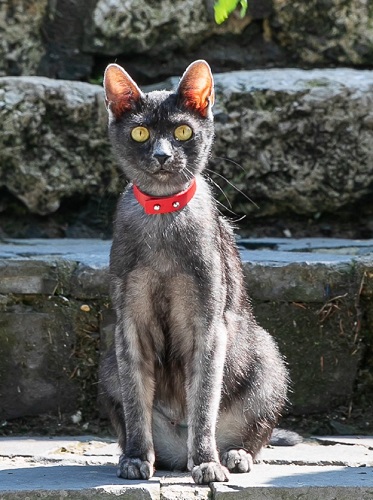
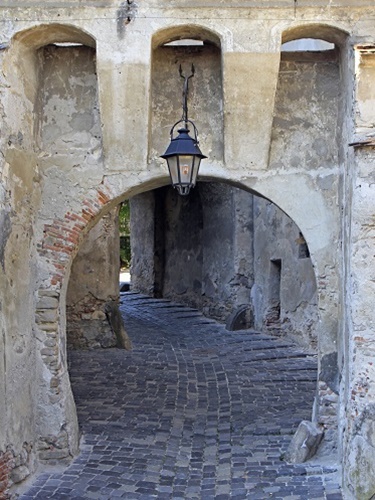
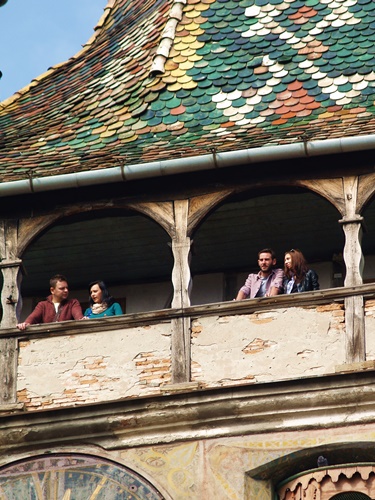
This day is dedicated to Bran Castle, well known as Dracula's Castle.
The castle came to be connected with the legend of Dracula the Vampire. It was built between 1377 and 1382, on a 60 m high rock with a strategic, military and commercial purpose. The building has four towers positioned at the four cardinal points. The walls are made of stone blocks, the rooms and narrow corridors constitute a mysterious labyrinth of ghostly nooks and secret chambers, whilst in the inner courtyard there are artesian wells, connected to an underground network. The castle had both a military and a customs point purpose.
If you are lucky enought, you can see the Castle's cat, named "Cozia". :)
After that, we move forward to Sighisoara citadel - Europe's best preserved medieval town!
Highlights include: Guild Tower, Venetian House (built in the 13th Century), Vlad the Impaler (Dracula)'s House, Antler House, Wood Covered Staircase, Hill Church, Hermann Oberth Square and the famous Clock Tower (Council Tower) built in the 14th century. The tower has seven foot thicks walls and was used to store ammunition, food reserves, archives and the city's treasures.
Optional: dinner in the house where Dracula was born, today a famous restaurant.
Accommodation in Sighisoara, right in the medieval citadel.
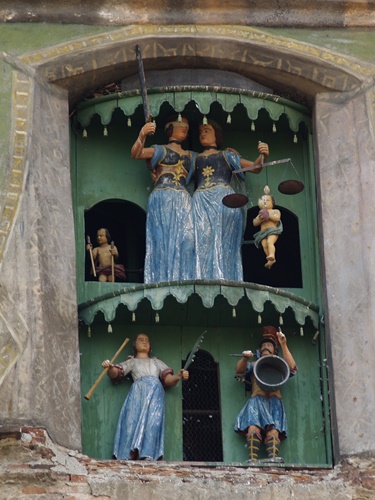

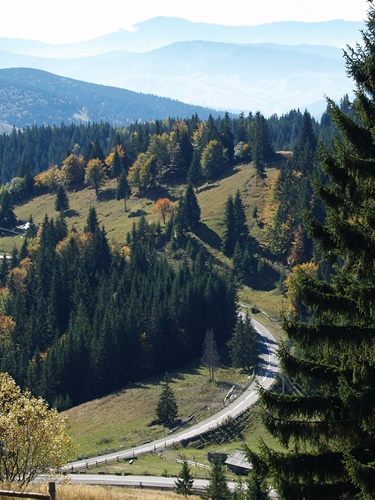
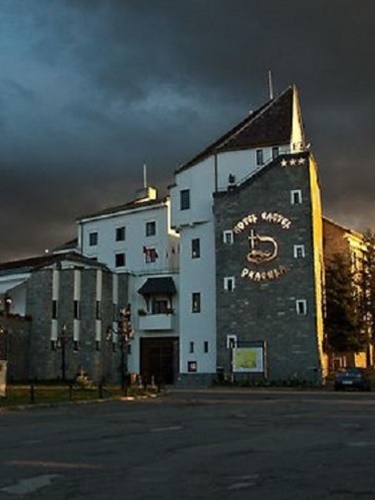
Today, we drive across Transylvania via Targu Mures and Bistrita (walk through the medieval town center) to the Borgo Pass in the Carpathian Mountains. We will enjoy amazing landscapes!
In the evening, arrival and accommodation in the area of “Dracula Castle” Hotel. At the construction of the hotel, in the 1980 year, the 21 members of the „Dracula” Society from London carried bricks by hand or by barrow, leaving a document with their signatures closed hermetically in an empty Scotch whisky bottle (the president at that time was Mr. Bruce Wightman). The place where the document is located is known only by the master of the „Dracula” castle from Piatra Fântânele in Romania.
In front of the hotel we can find the statue of legendary Bram Stoker. The hotel is closed now, but we can see it outside and enjoy the breathtake landscape.
We cros the mountains at dramatic Borgo Pass, locally known as Tihuța Pass. It connects the regions of Bucovina and Moldavia with the western region of the Carpathians. Bram Stoker had his character, Jonathan Harker, meet his cranky host by racing in a carriage across Borgo Pass at an elevation of over 3600-feet.
Our current path follows some of the towns mentioned in Stoker’s vampire story. We drive through Bistrita (Bistritz in the novel) where real estate agent Jonathan Harker slept overnight on his way to Dracula’s castle. The actual Golden Krone Hotel where Harker slept was part of Stoker’s imagination.
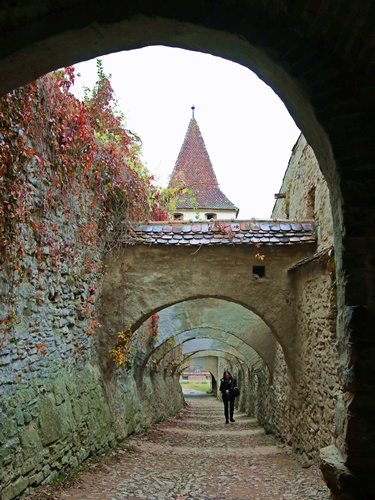
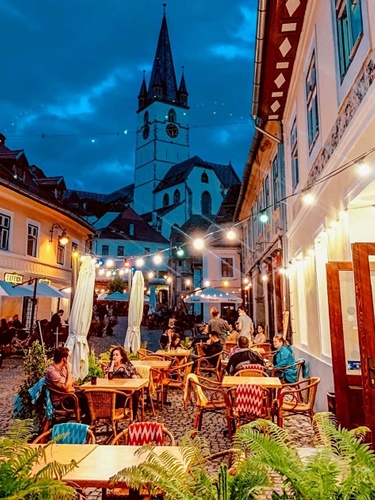
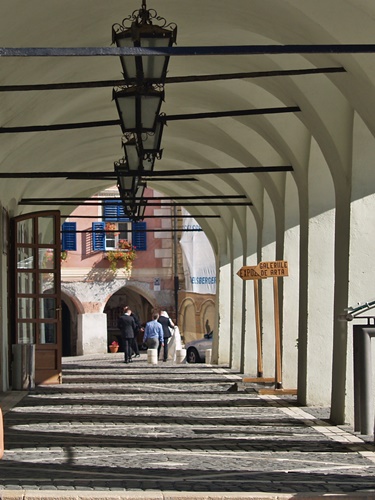
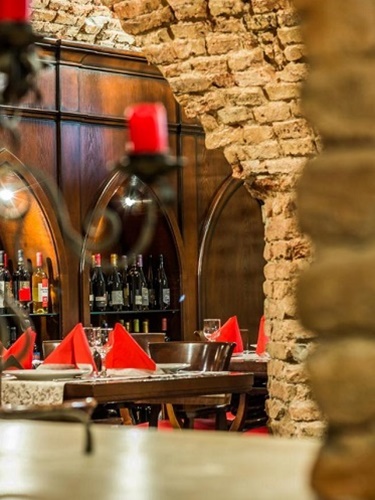
In the morning, we continue our tour with a walk in the spectacular scenery around the hotel, and then drive southwards to Biertan Fortified Church and visit it. In 1995, the fortified church of Biertan was included in the list of the world architectural patrimony under UNESCO patronage. The eclesiastic and defence complex was built in 15th-16th centuries in the late Gothic style,with specific Renaissance element.
We will then head to Sibiu - European Cultural Capital in 2007.
The city tour highlights will include: Piata Mare (The Big Square), Piata Mica (The Little Square), Piata Huet (Huet Square), Iron Bridge, The Evanghelical Church and Mitropolia (The Orthodox Church).
Sibiu (Hermannstadt in German) was the largest and wealthiest of the seven walled citadels (Siebenburgen) founded in the 12th century by German settlers known as 'Transylvanian Saxons'. The riches amassed by its guilds paid for the construction of both impressive buildings and the fortifications required to protect them.
Sibiu Old Town retains the grandeur of its earlier days when rich and powerful guilds dominated regional trade. Like Sighisoara and Brasov - two other outstanding towns in southern Transylvania - it has a distinctly Germanic feeling. Sections of the medieval wall still guard the historic area, where narrow streets pass steep-roofed 17th century buildings with gable overhangs before opening into vast, church-dominated squares such as Great Square and Little Square.
Overnight in Sibiu medieval center.
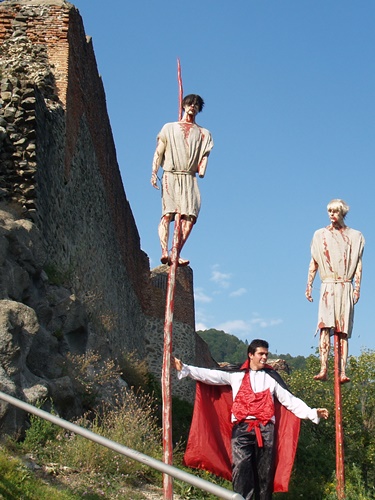
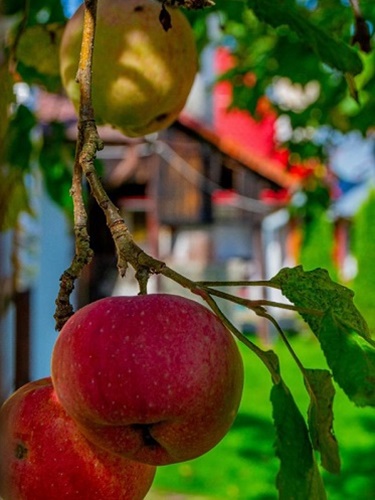
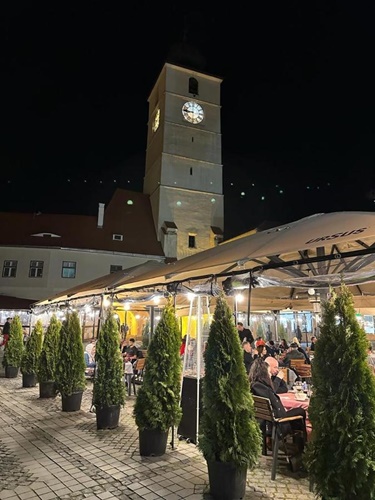
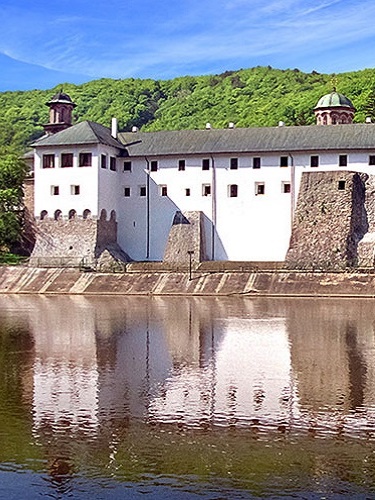
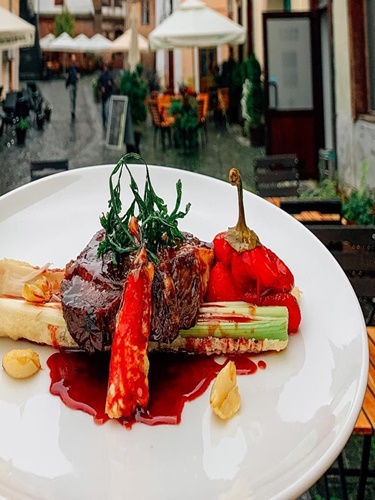
In our last day in Transylvania, we will complete our tour with a visit to Poienari, Vlad’s old and faithful citadel perched high on a cliff, more than 1000 stairs to climb.
In 1459, Turks captured by Vlad Tepes in revenge for killing his father and brother were made to march to this site, where they were ‘encouraged’ to build this amazing defensive fortress. It’s rightfully considered by Dracula buffs to be the ‘real’ Dracula’s castle.
In the evening, arrival in Bucharest capital, where we will end our tour.
Drop off at your hotel or directly at the airport.
*Additional night in Bucharest can be added if needed, additional cost will apply.
715 EUR/pers (for a group of min. 6 persons travelling in minivan)
*for less people traveling together, the price will be revised
- Professional guide assistance, English speaking (or other languages upon request), during the whole trip;
- Transport by private modern AC car/mini-van (fuel and parking fees included);
- Airport pick-up/drop off (if the tour starts and ends at the airport - upon request);
- 5 night accommodation, breakfast included, in 3* and 4* hotels;
- City tour in each city in the trip.
- Entrance fees to the touristic attractions included in the itinerary;
- Photography fee;
- Meals, other than those mentioned in the itinerary;
- Other expenses (such as souvenirs, room service, tips and so on).

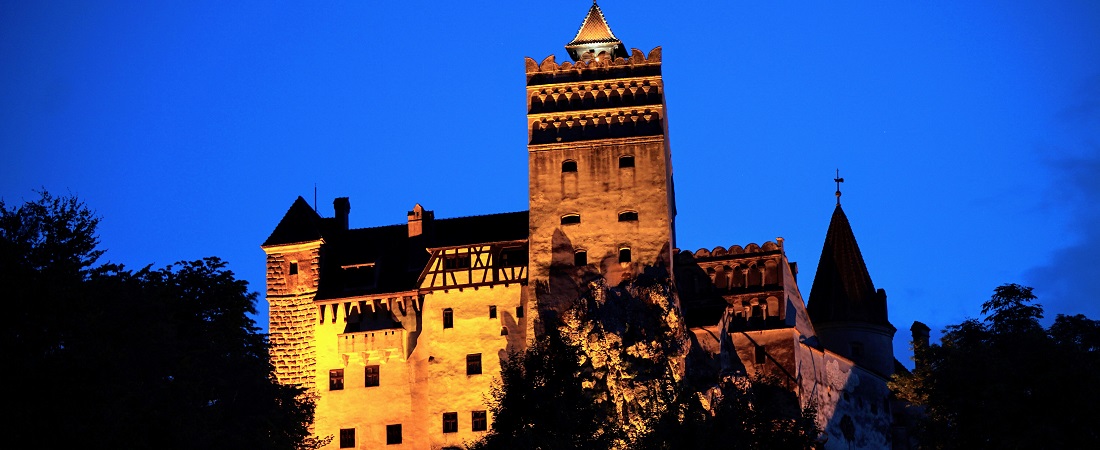
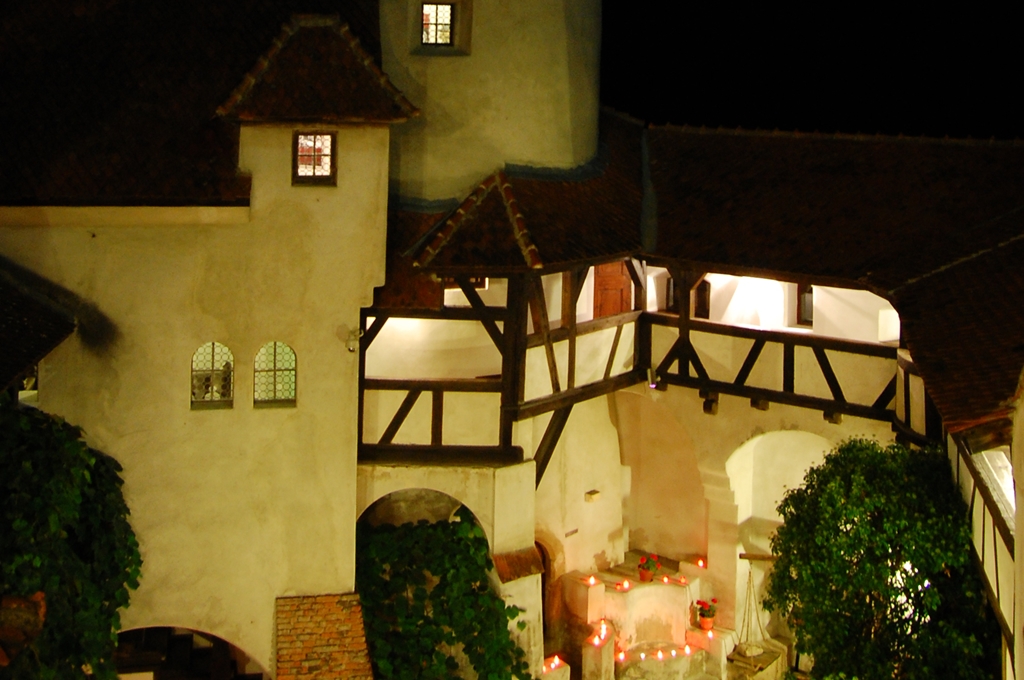


.png)



